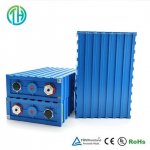I have been recommending Odyssey batteries for a while, but I've just recently changed my mind.
Years ago, they were making the Optima batteries in Sweden or someplace and they were outstanding. I dropped one several times, broke a big hole in the case, and still used it for years, I mean really good. Then they sold out, moved production to Mexico and I had three warrantied in the next two years. So, I made the move to the Odyssey batteries, and they were excellent. But looking at my pile of dead Odyssey batteries makes me realize is all the ones I've bought since those first few seem to die after just a few years. For a while I was giving them the benefit of the doubt and assuming I was being really hard on them in one way or another, which was sometimes true, but I just had a failure of one that I'd treated with nothing but kindness and care and then the one time I needed more than a tiny fraction of it's power, a cell shorted out. Still starts the vehicle as part of a 24V pack, but won't charge properly.
I need to try to get it warranted, but I've read a lot of horror stories about them not honoring the warranty, so I'm not hopeful.
So, for me at least, it's finally time to go to LiFePO4. The nice thing about the Iron-phosphate cells is they work on the same charge voltage as a normal 12V lead-acid battery, so no fancy BMS needed, just use four cells per 12V rather than six for lead-acid. I tried it on a small car years ago and it worked, but the price was high and the cells weren't quite robust enough. Now they make some great 200AH cells that are rated for an honest 400+A draw before the voltage sags. 2000-6000 complete cycles depending on who made them. Get the plastic ones and they are insulated, so no outer insulating case required. Another nice feature is since they are individual cells, if one goes bad or gets damaged, just replace that cell. Expect to pay $350-550 per 12V, depending on quality and quantity purchased, so very cost-competitive with prices on a new Hawker or Odyssey 6TL.
A balance-charger is a good idea and they don't take kindly to being discharged 100%, but they don't suffer anything like the LION cells that you kill dead under about 2.2V/cell, no matter how briefly.
View attachment 896141
Some sample ratings:
| Max Continuous discharge current | 200A |
| Max Long Pulse Discharge Current | 400A Maximum duration:3min |
| Max Short Pulse Discharge Current | 600A/10S |
| Dimensions(mm) | L182mm x W72mm x H281mm |
Now, 400 or 600A might not seem like anything compared to the CCA numbers you see on traditional lead-acid batteries, but it's not apples-to-apples and the lead-acid battery will drop to 7.2V under load at it's CCA in 30-seconds, where these don't see that big a voltage-drop, so you don't get the slow-cranking you see with lead-acid.



